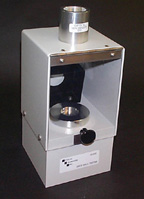 |
| Photo courtesy of Optical Machinery. |
Stigi told VMail that the FDA is planning to “reannounce” the guidance document soon. “This will again encourage people to utilize the next 90 days to comment,” he remarked. After receiving the industry’s comments, Stigi said he and his team will meet with the technical group from the FDA’s ophthalmic division and respond.
“We’re encouraged by FDA’s response,” said Ed Greene, CEO of the Vision Council of America, which is leading a coalition of optical industry groups that is challenging the FDA proposal. “Hopefully this will allow us some input into eventually changing the federal regulation itself, and, in the interim, produce a more meaningful Q&A.”
The FDA issued the guidelines in late October, 2007 in the form of a draft guidance, which provides the optical industry with questions and answers about the federal regulation for impact resistant lenses which has been in place since 1972, when glass lenses were still dominating the industry. The document updates the 1987 FDA draft guidance on impact resistant lenses.
“We’re pleased FDA is giving everybody more time to get their comments in,” said Grady Culbreth, immediate past president of the National Association of Opticianry (NAO), which is working with VCA to provide input to the FDA.
A major issue for VCA, NAO and other industry group is a requirement that lenses to be drop-ball tested at the place of edging. This could create a financial and practical burden on eyecare professionals by requiring them to purchase lens testing equipment, as well as force ECPs to outsource lens-finishing processes to third-party laboratories. ECPs that conduct any type of edging would be viewed as the manufacturer and be subject to liability.
“We realize technology changes and business operations change,” Stigi said. “We’re looking to get input. If things need to be changed in the guidance, then we’ll change them.”











